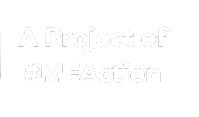- This page was created by volunteers like you!
- Help us make it even better. To learn more about contributing to MEpedia, click here.
- Join the movement
- Visit #MEAction to find support or take action. Donate today to help us improve and expand this project.
- Congratulations!
- MEpedia has got over 30 million views as of August 2022!
MEpedia:Copyright policy
Understanding copyright policy on MEpedia:
Contributions from editors[edit | edit source]
- All MEpedia content is covered by CC BY-SA 3.0 License and GFDL license: in brief, this means that when you click save on an edit, you agree to release your contribution for revision and redistribution by anyone who wishes. This facilitates the circulation of knowledge on ME as well as collaboration among MEpedia editors. However, if you do not wish to grant this release of something you have created (whether text, photograph, or other medium), you should not add it to MEpedia.
Images and files from elsewhere[edit | edit source]
- Licensing MEpedia under CC BY-SA 3.0 also means that all work submitted must be compatible with that license unless otherwise stated - do not add an image with a different copyright to a page without adding a caption for license information. You may only add work you created yourself and thus have legal right to grant the license for; or, work copied from a source with a public domain license or otherwise compatibly licensed for reuse. Do not add copyrighted work to MEpedia without first securing the correct license, for example a Creative Commons Attribution or Creative Commons Share-Alike license may be mentioned on a research paper, on a journal's website under the licensing and copyright orterms of use pages, or on a WikiMedia Commons image. As a rule, assume all work is copyrighted until you can confirm otherwise, even if it is publicly available to view.
Using an alternative license[edit | edit source]
Image with Creative Commons Non-commercial 4.0 license, license chosen on upload: Grey and white matter image
Use of image on page states both the correct license, and the citation or doi number/link.
[[File:Progressive Brain Changes Longitudinal MRI Study (2016).jpeg|300px|thumb|right|Progressive Brain Changes Six-year Longitudinal MRI Study (2016) Source: Shan et al (2016), J Magnetic Res Imaging. License: [https://creativecommons.org/licenses/by-nc/4.0/ CC-BY-NC-4.0] https://doi.org/10.1002/jmri.25283]]
Displayed on page:

Public domain reasons [edit | edit source]
Typical reasons for an image or file being public domain include:
- The copyright has expired, for example the author/creator died more than 70, 100 or 120 years ago (different countries have different numbers of years), for example historical images like this heart, or Gray's Anatomy images
- The image is too simple to copyright, for example a very, very simple icon like a colored shape
- The author/creator made a declaration that they were releasing it into the public domain, for example the author of this icon added a CC-zero copyright statement
- It was created by an employee of the United States government during their normal work, for example this graph, which was created by the CDC. These files should be the PD-USGov license.
Open access is not a public domain license[edit | edit source]
This is not a type of license. It just means anyone can read it without paying. Most open access research will also have a creative commons license, which may be a non-commercial, or no-derivatives license that you need to display with the image.
Free access, HHS access, PubMed Central and Public access[edit | edit source]
None of these are types of license. They simply mean the full article and any images can be viewed without charge. This may be a condition of a grant awarded to the authors. This does not mean they are licensed for reuse. Check for a "Creative commons" or license statement on the article, or on the PDF copy of the article. There may also be Copyright and licensing information on the original journal's website. Unless it clearly states which license it uses, do not upload it or parts of it to MEpedia. Most articles marked "free access", "HHS access" or "Public access" cannot be reused on a website.
Graphs from journals or books[edit | edit source]
If a graph is part of an article which is not licensed for reuse you may be able to re-create it using a graphics app or program, or using the Visual editor's graph tool. The caption must state the full source that the data came from, including the citation.
Royalty free images and clipart[edit | edit source]
This does not mean public domain or freely available for reuse. Royalty free images involve paying a fee to the website, either once or yearly, to reuse the images or material. Check the information on the website for details. Clipart images may be protected by copyright, or may be available for reuse; check the website for details before using.
Fair usage[edit | edit source]
Images not licensed for reuse may be uploaded with a fair use license in certain circumstances only, e.g.:
- An photo someone posted on Twitter, if you have asked for the photographer's permission, eg for Millions Missing images
- An image or file with another license that allows reuse, describe the license in the upload box
- Copyright is known to have expired
Videos[edit | edit source]
Videos that are linked to and displayed from MEpedia but not copied to MEpedia, for example YouTube videos, can be added using the Visual editor's Insert, Template, Video option. The video's creator must be stated. No separate license is needed since websites like YouTube allow creators to block embedding of videos on other websites of they wish to. Any video you made yourself and upload to MEpedia must have a suitable license chosen.
Images of children[edit | edit source]
- Also seek consent from parents, do not identify child's location or school

